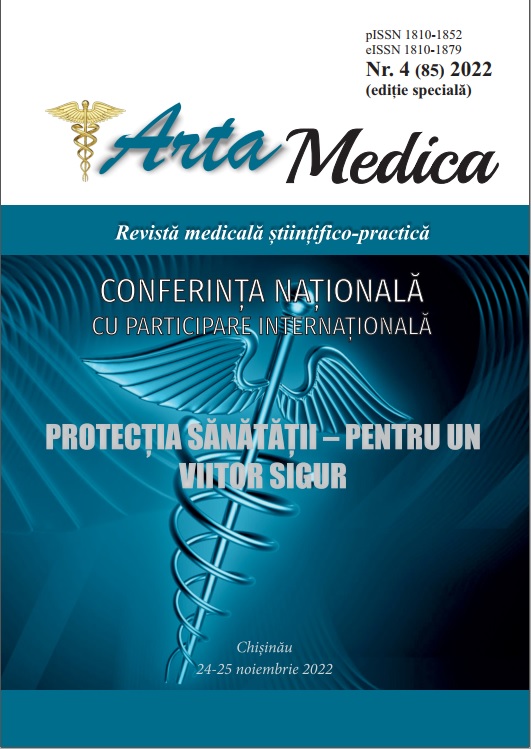ASSESSMENT OF HEALTH PROMOTION ACTIVITIES AT THE WORKPLACE IN FOOD INDUSTRY COMPANIES
DOI:
https://doi.org/10.5281/zenodo.7328640Keywords:
occupational health, health promotion at work, the food industry, the burden of non-communicable diseases, attributable deaths, occupational risk factors, work safetyAbstract
Objectives. Currently, the epidemiological pattern highlights the fact that the main causes of death are non-communicable chronic diseases, such as ischemic heart disease, stroke, cancer and liver cirrhosis, diabetes, etc. Several studies have shown that in addition to behavioral risk factors, professional risk factors play a significant role in the development and maintenance of this category of pathology. The World Health Organization emphasizes that the workplace is an enabling environment for promoting health and well-being, including by ensuring a safe and healthy physical and psychosocial work environment. The purpose of the study is to assess the needs and activities of health promotion in economic units in the food industry.
Methods. A total of 4 enterprises from the food industry, leaders in bakery, production of milk, carbonated beverages and confectionery, were analyzed. The state of health of the employees, the professional risk factors, the health promotion programs at the workplace were studied. Absolute frequencies and percentage ratios were used for descriptive analysis of the study. The χ2 test of independence, multinomial regression model and three-way ANOVA analysis were used for inferential analyzes (IBM SPSS software, Statistics 23).
Results. Between 2010 and 2020, the ratio between the chronic and primary morbidity rate changed, with a statistically significant reduction in the chronic morbidity rate per 1.000 employees compared to the primary morbidity rate (z=14.6; p<0.001). The highest percentage of workers attending medical specialists was recorded at the therapist (38.0%), gynecologist (14.9%), and surgeon (13.1%). Annually, 236.0±107.00 employees exposed to occupational risk factors are eligible for mandatory periodical medical examinations, of which 49.1±12.05% are women. The coverage rate being 91.5±6.00% and 94.1±2.93% among women. During the respective examinations, 0-17% (on average 10.2±5.13%) of people examined are diagnosed for the first time with general chronic diseases, including 0-15.8% (on average 9.2±4.61%) among women. In all enterprises, measures are implemented to comply with the occupational health and safety requirements provided by the health legislation, measures to combat tobacco smoking provided by Law 278 of 14.12.2007 on tobacco control.
Conclusions. The occupational environment in the food industry is characterized by the presence of occupational risk factors with an impact on the development of major non-communicable diseases. Only health promotion interventions imposed by regulations are implemented in enterprises. It is imperative to capitalize on the workplace as an enabling environment for health promotion, by creating the national network of health-promoting workplaces in the near term.
Downloads
Published
Issue
Section
License
Copyright (c) 2022 Arta Medica

This work is licensed under a Creative Commons Attribution-ShareAlike 4.0 International License.





